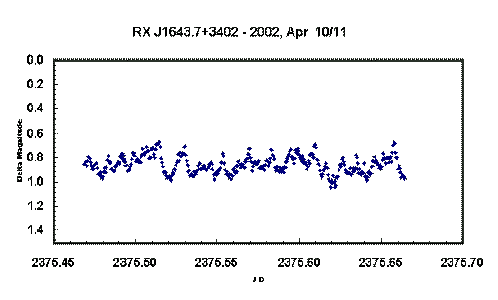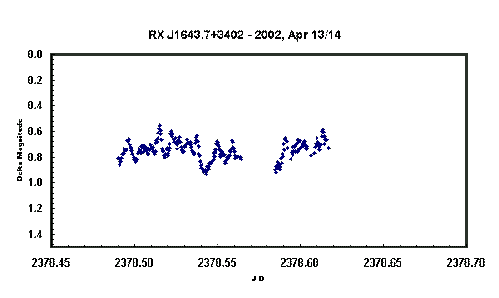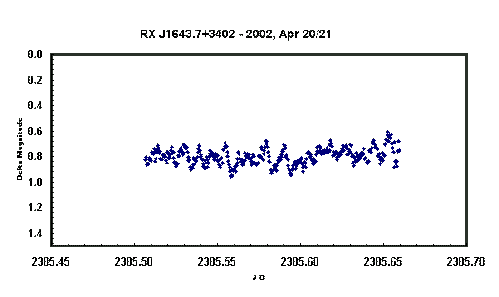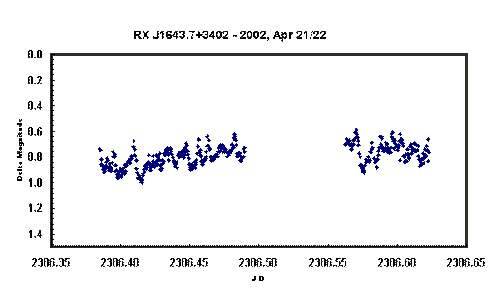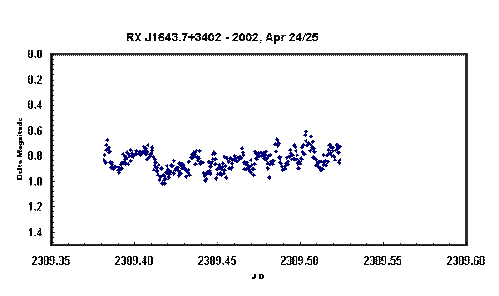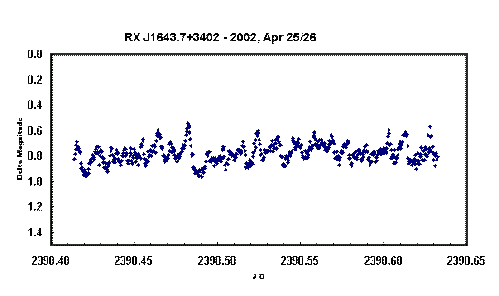RX J1643.7+3402 - A bright nova-like CV in the period gap
RX J1643.7+3402, located at RA = 16h43m45.72s,
Dec = +34°02'40.2" (J2000.0) is a ROSAT X-ray source, that was
discovered as a bright (V ~12.6) cataclysmic variable by
A. Michaelian et al. (A. M. Mickaelian, S. K. Balayan, S. A. Ilovaisky, C.
Chevalier, M.-P. Véron-Cetty and P. Véron, A&A 381, 894-904
(2002)).
Michaelian reported spectroscopic and photometric observations,
showing it to be a novalike variable sharing some of the characteristics
of the SW Sex sub-class of novalike CVs. They announced a spectroscopic
period of either 2.575h or 2.885h, within the period "gap". They
furthermore reported a photometric modulation with a probable period of
2.595h and an amplitude of ~0.1 mag in V, that was present on
most nights and could either be a "positive" or a
"negative" superhump modulation (depending on the exact
spectroscopic period), indicating the presence of a precessing accretion
disk in this system. In addition, they observed rapid variations of 0.1 to
0.2 mag amplitude in V, repeating with a time scale of ~15 min.
With these 'credentials', the object evidently attracted the attention
of other professional astronomers, including Joe Patterson (Columbia
University, CBA, New York) who launched an international observing
campaign in April 2002, to study RX J1643.7+3402 in full detail, using the
telescopes of the CBA network (high-speed time series photometry).
We here report unfiltered CCD observations of RX J1643.7+3402, obtained
at CBA Belgium Observatory in April 2002. The object definitely is amongst
the most interesting CV's we have ever studied, showing a complex variety
of periodicities..
